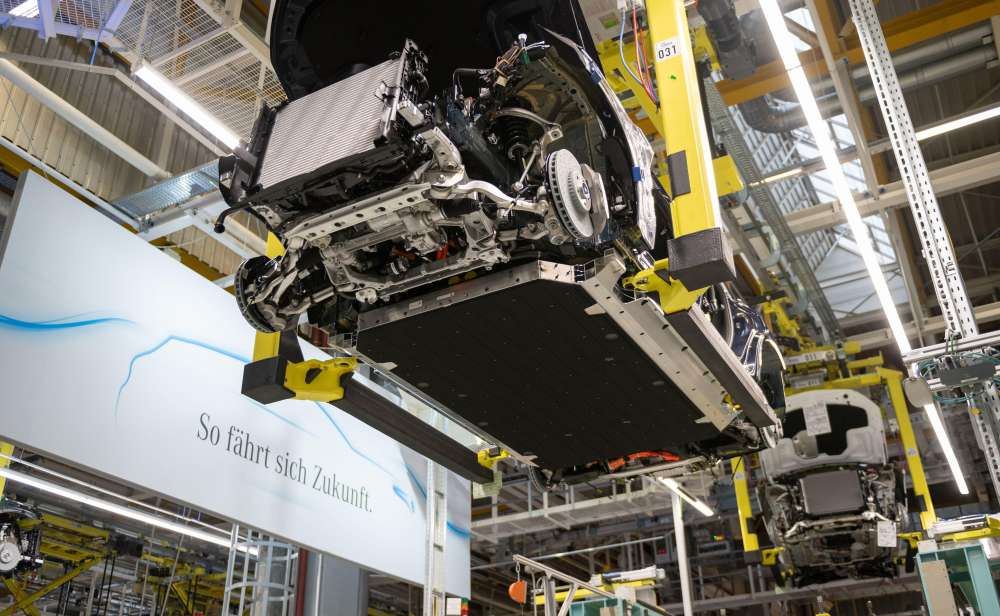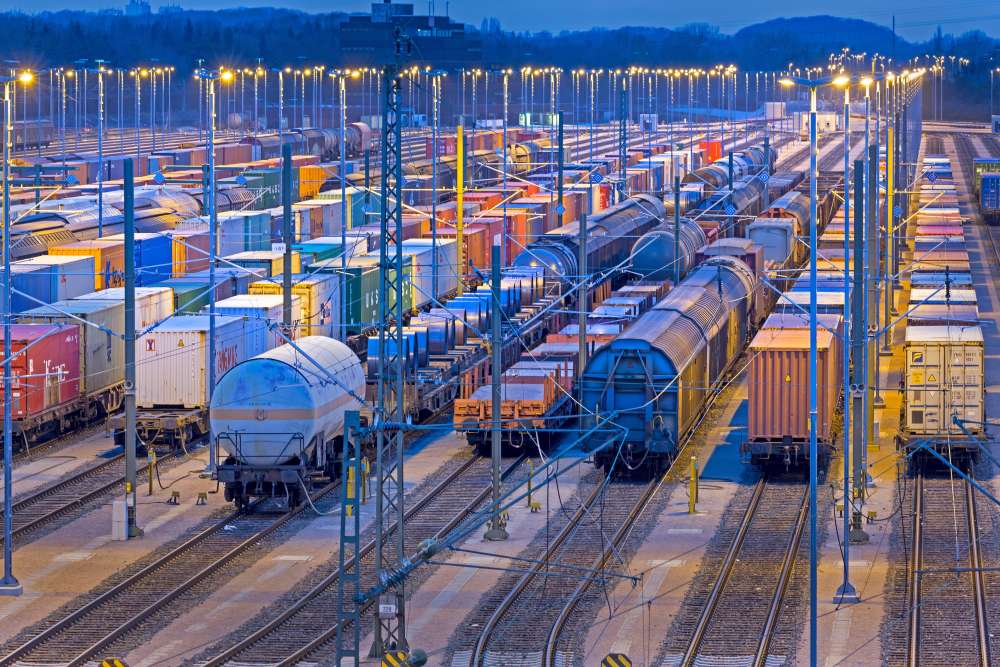“Chips or Not, EU Need to Mind Your Own Biscuits”: Why Europe Must Up Its Economic Weight

Former US Speaker of the House Nancy Pelosi at the signing ceremony for the The Chips and Science Act bill in July 2022. (Bonnie Cash/UPI/Shutterstock)
The recent paradigm shift in US export controls should be a rallying call for Europeans to reassess their own geo-economic doctrine. Only if the EU boosts its global market power can it assume a more favorable position vis-à-vis China.
I will be forgiven if I take a page from Politico’s Morning Trade dad-joke rule book while quoting the US country singer Kacey Musgraves. But for reasons other than you might think, the major paradigm shift in US export controls that manifested in a barrage of new American laws and regulations should have Europeans worried. We should be concerned that our Union has only slowly entered this new geopolitical age. Germany in particular is only hesitantly adapting to the crises of today, not to mention the challenges of tomorrow. To see the United States move ahead unilaterally in trade controls is, therefore, all the more frustrating. So why do I quote the song “Biscuits” when writing about Washington’s strengthened and extraterritorial export controls regarding semiconductors? Because these new policies around chips are just one part of a larger lesson in geo-economics that Europeans better learn quickly. The good news is that there is much that we can actually do to contribute to both the betterment of Europe and the strengthening of the transatlantic alliance.
Key Points:
- The US’ reassessment of China as a security threat has translated into a paradigm shift in Washington’s approach to export controls for dual-use items.
- Instead of trying to withstand US trade controls or match Washington’s subsidies, Europe should take steps to strengthen its own market power.
- To become economically more attractive, Europe should: work toward a capital markets and banking union; commit to a minimum threshold for R&D tax support; foster the creation of trustworthy data infrastructures; and build a clean energy network, among other things.
Export Controls for Dual-Use Goods
When US National Security Advisor Jacob Sullivan took the stage in the White House press briefing room on September 16, 2022, something extraordinary and yet unsurprising happened: the United States announced that it would radically change its export control policy vis-à-vis China while leveraging the gravitational pull of its own market power to attain US geo-economic goals.
What is now called the “Sullivan Doctrine” constitutes nothing less than a paradigm shift in the way that the United States strategically deploys its dual-use export controls in an era of increased geopolitical tension. When talking about dual-use controls, it is important to stress that such goods and wares – or “items” in export control parlance – can either be used for civilian or military purposes. Note that they cannot be used for both purposes simultaneously and that the context in which these items are employed thus matters greatly. Dual-use goods are controlled primarily because, given the specifications of a commercial purchase order (end use) or the risks associated with the respective importer (end user), they might pose a national security threat. Dual-use export controls’ main purpose is to ask whether, according to the specificities of a planned transaction, certain items could be used to manufacture biological, chemical or nuclear warfare agents or respective missile technology.
The challenge of such non-proliferation policies has always been to keep commercial interests and a country’s protection from national security threats in equipoise. Lest you are prepared to choke your economy, this balance is meant to ensure commercial activity, private investments, and – very important – innovation. Only if both aspects are weighed thoughtfully can a country actually have a strategically sensible approach to dual-use controls, because markets spur innovation – and that translates into technological progress – much better than governments.
So what changed with the Sullivan Doctrine? During the Cold War and beyond, it was the strategic goal of US export controls to “keep foes at a distance, while running faster.” With regard to China, the United States has now replaced the first part of this mantra with an approach that is often described as “higher fences around smaller yards”. Three aspects are at the center of this approach.
First, the political reassessment of China as a security threat in recent years has now been translated into concrete technocratic policy tools. China’s civil-military fusion makes it virtually impossible to differentiate between end users and end uses. It is the understanding of the Biden Administration that efforts to separate the two will not result in a distinction that is strategically useful. Therefore, the White House concluded that the US is facing a foreign adversary toward whom it should levy controls that – in certain areas – no longer seek to balance commercial and national security interests.
» The goal of the US' new China-only export controls is to keep the People’s Republic from acquiring certain technologies for as long as possible. «
Second, the time dimension of controls has been significantly expanded. The White House considers computing technology to be one of three technological “force multipliers” next to bioengineering and clean energy. Consequently, the administration is no longer willing to price in that China’s technological advancement will eventually catch up with any particular state of American capabilities. Instead, the goal of the new China-only export controls is to keep the People’s Republic from acquiring certain technologies for as long as possible.
This, in turn, helps to understand why, third, technology for the production of nodes and semiconductors at the bleeding technological edge is now controlled. The United States radically changed what it considers to be a control-worthy item and, commercially speaking, decided to intervene upstream of those value chains along which substantial risks can be reasonably expected to accrue further downstream. This means that the United States now controls a select group of items (“smaller yard”) that will be instrumental in researching and/or producing the goods that will produce the goods which, in turn, will serve to produce the goods that – eventually – will pose a national security risk to the US. In short: America is now trying to nip those risks in their very bud. America’s New Export Controls
Controls with a Global Reach
It is important to understand the degree of American market power that underpins this paradigm shift. The United States possesses hegemonic market power in three areas of semiconductor manufacturing – and it is leveraging this market power against China. First, American patents control the manufacturing technology (called “instruction set architecture,” or ISA) that makes developing microchips possible in the first place. Second, with Intel, Samsung and Taiwan Semiconductor Manufacturing Company (TSMC), non-Chinese companies with strong market exposure to the US play the main role in global semiconductor fabrication at a height of 14 nanometers and below. TSMC alone has a market share of about 52 percent, making it a decisive factor in the geostrategic re-orientation of US export controls. Third, this also applies to manufacturing technology, where Dutch company ASML is currently the sole provider of the plasma-based lithography machinery necessary for bleeding-edge semiconductor manufacturing. ASML supplies most of the world’s chip manufacturers and has a market share of around 62 percent. Add to this that the US Foreign-Direct Product Rule has been rewritten to impose extraterritorial re-export licensing requirements on chip-making technology containing US-produced content of 25 percent and above and it becomes clear that the arm of US export controls is very long indeed.
Americans Run Faster
Aside from this paradigm shift in its export controls, what was less surprising about Sullivan’s speech was that he described how the United States robustly leverages its own market power to create a gravitational pull toward those policy goals it otherwise would have had a much harder time realizing when using only diplomatic means to cut through the interest cacophony of its European allies. Both the recent CHIPS and Science Act as well as the Inflation Reduction Act (IRA) leverage the economic heft of the United States and thereby continue the second part of the above-mentioned strategic paradigm of “running faster.” While the IRA’s “buy American” clauses have a decidedly protectionist flavor, one should put the bill’s clean energy subsidies of USD 370 billion over ten years in relation to the United States’ annual GDP of USD 23 trillion. Still, both acts quite forcefully incentivize Europeans to revamp their international politico-economic capabilities.
Europeans Need to Do Better
Doing better will require Europeans to work on their economic strengths instead of trying to withstand US trade controls or matching Washington’s subsidies. In times of significant inflationary pressure, pumping money into state-denominated areas of the economy would create a race to the bottom and weaken the Western alliance. What is more: why should Europeans copy the IRA and open the door to something that even China – subsidizer-in-chief – has recently found out is significantly hurting its own economy? After decades of massive state-led infrastructure investments, the Chinese market simply cannot absorb Beijing’s massive investments any longer. That is yet another strong argument against subsidies. Member countries agreed in 1994 to give the World Trade Organization a clear mandate on how to tackle subsidies – and for good reasons: not because they wanted to curtail astute levers of politico-economic creativity, but because terrible things happen when a government loses sight of the local-knowledge problem – that is, the fact that markets as opposed to governments are capable of sensibly directing decentralized information – because it is so busy printing money. So, what does this mean for Europeans? Not only economic doctrine suggests that there is homework to be done.
» A boost that would translate through the entire economic ecosystem of the single market would be for all member states to “go Baltic,” meaning to modernize administrative processes and to digitize public life. «
In Geo-Economics, Mass is Class
Europeans should aim to fundamentally increase their economic weight. The EU does not yet have a capital markets union and lacks a banking union as well. That weakens the heavily capital-intensive fabrication of semiconductors in Europe. Europeans also do not have a regulatory floor when it comes to granting tax benefits for commercial research and development (R&D). To strengthen innovation and crowd in private investments in a strategically important field, all 27 EU member states should commit to a minimum OECD threshold for R&D tax support. A boost that would translate through the entire economic ecosystem of the single market would be for all member states to “go Baltic,” meaning to modernize administrative processes and to digitize public life to the greatest extent possible.
In addition, Europe should encourage the creation of trustworthy data infrastructures that reflect European safety needs, are accessible to all market participants, and meet pre-defined technical and regulatory criteria. Europe should also forcefully support its NewSpace industry, which harbors immense potential for data-based business models, integrated value chains and innovations far beyond the space sector. Last but not least, Europe needs to double down on creating a clean energy network that might not only stem the tide of the climate crisis but would also spur innovation due to the necessarily decentralized and automated management of its electrical grids.
Europeans need to do all these things and more – particularly in service of their geo-economic goals. Especially Germany has an unbalanced real-economic exposure to China and must open new markets to diversify. But, opening new markets is easier said than done. European companies need business opportunities outside of the single market. The European Commission works under the assumption that 85 percent of economic growth will happen outside of the EU in the next decade. If that is only remotely true, free trade agreements are the only way to accomplish preferential and efficient market access. However, for such economic partnership agreements to become a reality soon, Europe itself needs to become economically more attractive. Only then can Europeans leverage their interests more effectively – and only then will the European project garner the kind of market power it needs to assume a geopolitically more favorable position alongside Washington and vis-à-vis Beijing.
Europeans have been put off by the new US export controls and the IRA. The harsh truth is that the United States merely informed its European allies about the tightening of controls; and when Congress wrote the IRA, the EU wasn’t even on their radar. We need to learn that close transatlantic relationships as well as complicated far-eastern partnerships can only work if you continuously take time to invest in yourself – and that is what we as Europeans should do.
Nikolas Keßels
Deputy Head, Department of External Economic Policy, Federation of German Industries (BDI)
Weiterlesen

Securing Supply Chains for the Low-Carbon Economy: The Case of Electric Batteries
The transition to low-carbon technologies is creating new dependencies for the European economy. Especially critical for Germany: electric batteries. To reduce risks and reshape emerging global value chains, Berlin and other EU governments must prioritize a comprehensive governance approach.

Economic Zeitenwende? Lessons from Japan’s Economic Security Policy
Reducing its dependencies will be an important task for Germany’s first-ever National Security Strategy. Japan’s pioneering policy of economic security can offer a number of lessons for Berlin.

Another Undeclared Conflict: Economic Statecraft and Germany
Economics and finance will determine the balance of power between states in the decades to come. Germany should recognize its own sway in this regard – and recalibrate its approach to using economic tools in foreign policymaking.